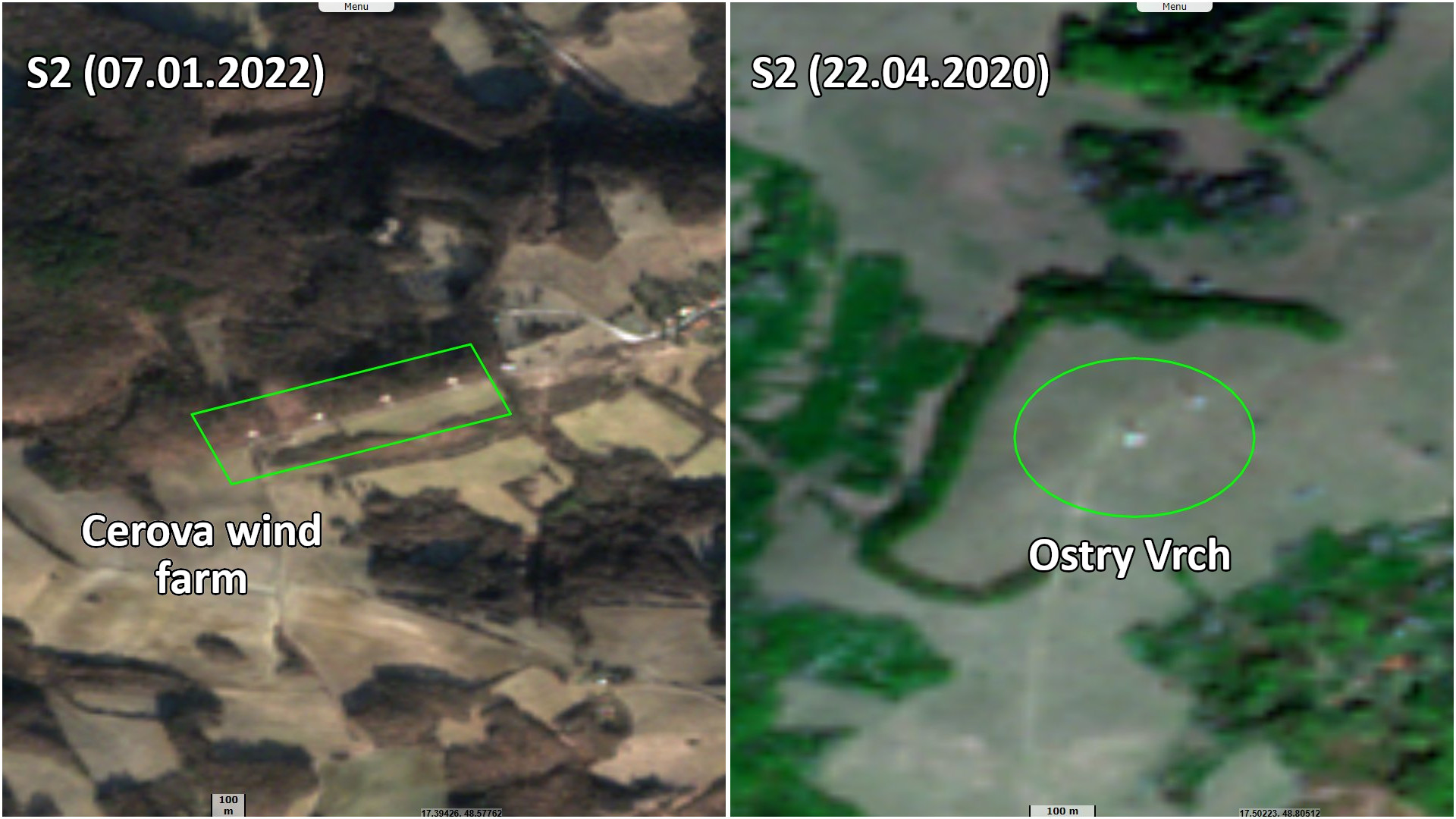Slovakia to phase out coal by the end of 2023
Sentinel-1 CSAR IW acquired on 28 August 2019 at 16:34:54 UTC
Sentinel-2 MSI acquired on 25 October 2019 at 09:51:01 UTC
...
Sentinel-2 MSI acquired on 07 January 2022 at 09:53:09 UTC
Sentinel-1 CSAR IW acquired on 24 January 2023 at 05:02:10 UTC
Sentinel-2 MSI acquired on 25 October 2019 at 09:51:01 UTC
...
Sentinel-2 MSI acquired on 07 January 2022 at 09:53:09 UTC
Sentinel-1 CSAR IW acquired on 24 January 2023 at 05:02:10 UTC
Keyword(s): Climate change, land, infrastructure, green energy, renewable, coal, oil and gas, greenhouse gas emissions, wind power, nuclear power, Slovakia
One of the most polluting power plants in Europe, lignite-fired Nováky Power Plant should close in 2023 when the Slovakian electric grid in the Upper Nitra region allows turning it off.
Vojany Power Plant is closing its coal unit, keeping its gas-production capacities.
Its two nuclear power plants currently serves more than half of Slovakia's electricity needs. Its two gas stations constitute an important complement to its energy source.
Russia's reduction in gas supplies to Europe is forcing European Union countries to consider alternative energy sources. While this is also true of Slovakia, this small Central European country's high dependency on Russian gas makes it exceptionally vulnerable.
Slovakia has already developed hydropower capacities. It has no coast to develop offshore renewables or LNG, but its onshore windpower potential is almost untapped, with less than 10 turbines, partly due to slow bureaucracy.





